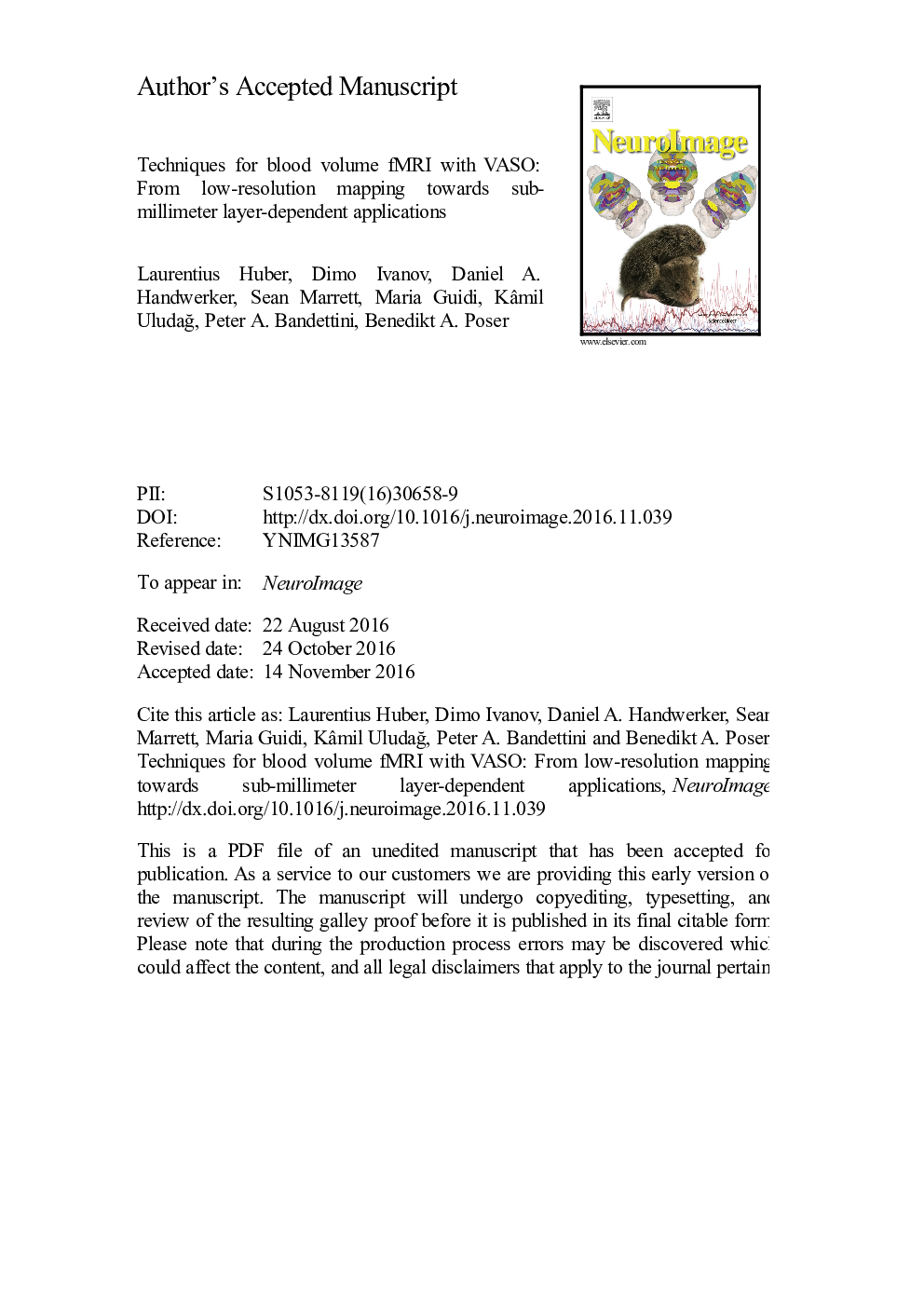| Article ID | Journal | Published Year | Pages | File Type |
|---|---|---|---|---|
| 8687425 | NeuroImage | 2018 | 38 Pages |
Abstract
Quantitative cerebral blood volume (CBV) fMRI has the potential to overcome several specific limitations of BOLD fMRI. It provides direct physiological interpretability and promises superior localization specificity in applications of sub-millimeter resolution fMRI applications at ultra-high magnetic fields (7Â T and higher). Non-invasive CBV fMRI using VASO (vascular space occupancy), however, is inherently limited with respect to its data acquisition efficiency, restricting its imaging coverage and achievable spatial and temporal resolution. This limitation may be reduced with recent advanced acceleration and reconstruction strategies that allow two-dimensional acceleration, such as in simultaneous multi-slice (SMS) 2D-EPI or 3D-EPI in combination with CAIPIRINHA field-of-view shifting. In this study, we sought to determine the functional sensitivity and specificity of these readout strategies with VASO over a broad range of spatial resolutions; spanning from low spatial resolution (3Â mm) whole-cortex to sub-millimeter (0.75Â mm) slab-of-cortex (for cortical layer-dependent applications). In the thermal-noise-dominated regime of sub-millimeter resolutions, 3D-EPI-VASO provides higher temporal stability and sensitivity to detect changes in CBV compared to 2D-EPI-VASO. In this regime, 3D-EPI-VASO unveils task activation located in the cortical laminae with little contamination from surface veins, in contrast to the cortical surface weighting of GE-BOLD fMRI. In the physiological-noise-dominated regime of lower resolutions, however, 2D-SMS-VASO shows superior performance compared to 3D-EPI-VASO. Due to its superior sensitivity at a layer-dependent level, 3D-EPI VASO promises to play an important role in future neuroscientific applications of layer-dependent fMRI.
Keywords
ROICNRCBVSNRBOLDFOVSAREPIecho planar imagingfMRIfunctional magnetic resonance imagingCerebral blood volumeblood oxygenation level dependentgrey matterCSFCerebrospinal fluidregion of interestField of viewspecific absorption rateSignal-to-noise ratioContrast-to-noise ratioControlled Aliasing In Parallel Imaging Results In Higher AccelerationGradient echo
Related Topics
Life Sciences
Neuroscience
Cognitive Neuroscience
Authors
Laurentius Huber, Dimo Ivanov, Daniel A. Handwerker, Sean Marrett, Maria Guidi, Kâmil UludaÄ, Peter A. Bandettini, Benedikt A. Poser,
